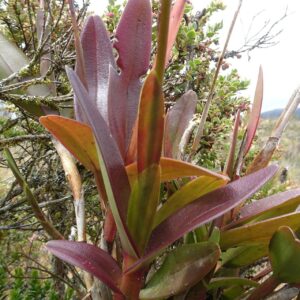How to Propagate Epidendrum cylindraceum

Unveiling the Secrets: Propagating Epidendrum cylindraceum for Orchid Enthusiasts
The Epidendrum cylindraceum, with its charming reed-like stems and vibrant blooms, is a fascinating orchid for both novice and seasoned collectors. This epiphytic beauty, native to Central and South America, is relatively easy to care for and, even better, surprisingly straightforward to propagate. So, if you’re looking to expand your orchid family or share the joy of these unique plants, read on!
Understanding the Basics: Two Primary Methods
1. Division: This is the most common and arguably the easiest method for propagating Epidendrum cylindraceum. Mature plants often produce multiple growths, forming clumps called “keikis.” These keikis naturally develop their own roots and can be separated from the mother plant.
Here’s how:
- Timing: The best time for division is during the plant’s active growing season, typically spring or early summer.
- Process:
- Carefully remove the plant from its pot.
- Gently tease apart the roots to locate sections with at least 3-4 healthy pseudobulbs and a well-established root system.
- Using a sterilized, sharp knife or shears, divide the rhizome (the horizontal stem connecting the pseudobulbs), ensuring each division has sufficient roots.
- Treat any cut surfaces with cinnamon powder or a fungicide to prevent infection.
- Pot each division in a well-draining orchid mix, ensuring the base of the pseudobulbs sits slightly above the potting medium.
- Water sparingly until new growth emerges, indicating successful establishment.
2. Backbulb Propagation: For a more adventurous approach, consider backbulb propagation. Backbulbs are older, leafless pseudobulbs that hold dormant growth potential.
Here’s how:
- Selection: Choose plump, healthy backbulbs without any signs of damage or disease.
- Preparation:
- Remove any dried sheaths or remnants of leaves from the backbulbs.
- Optionally, treat the backbulbs with a rooting hormone to encourage growth.
- Planting:
- Place the backbulbs horizontally on a bed of moist sphagnum moss or a very fine orchid mix within a shallow container or tray.
- Ensure good air circulation around the backbulbs.
- Patience is Key: Keep the environment humid and warm (around 70-80°F). It may take several weeks or even months for new growth to emerge. Once the new growths develop roots and leaves, they can be carefully separated and potted individually.
Tips for Propagation Success:
- Sterilization is Key: Always use sterilized tools and pots to prevent fungal or bacterial infections.
- Appropriate Medium: Use a well-draining orchid mix, as Epidendrum cylindraceum dislikes soggy roots. A mix of bark chips, perlite, and coco husk works well.
- Light and Humidity: Provide bright, indirect light for optimal growth. Maintain moderate to high humidity, around 60-70%.
- Patience is a Virtue: Propagation takes time. Be patient and don’t be discouraged if you don’t see results immediately.
By following these steps and with a dash of patience, you can successfully propagate your Epidendrum cylindraceum and enjoy an abundance of these graceful orchids. Not only will you expand your plant collection, but you’ll also delve into the rewarding world of orchid propagation!